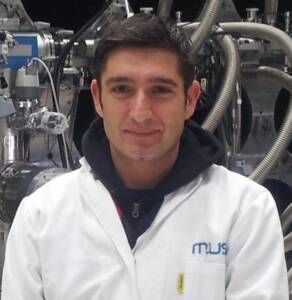PARALLEL SESSION D
D2 Vacuum, cryogenic and leak detection technologies
Thu 3rd Oct 14h00 - 16h20
Hall 27 - Ressel
Many Big Science organisations need a range of cryogenic installations and systems in order to operate superconducting magnets, detectors or other equipment requiring cryogenic (extremely low) temperatures. The technical areas of interest include: cryogenic equipment, cryogenic storage and handling, vibration reduction, remote cooling, long lifetime to reduce maintenance, cryogenic materials, structural materials at cryogenic temperatures, etc. In this session, synergies between ground and space cryogenics will also be addressed.
Vacuum chambers and components are pervasive in Big Science organisations with particle accelerators, detectors, instrument beamlines, coating systems and more. Throughout the phases of design, construction, operation, maintenance and upgrade of high & ultra-high vacuum systems, expertise is required for: manufacturing of HV and UHV components, vacuum sealing and leak-tightness technology, vacuum control systems, interlocks & monitoring tools; coatings, surface cleaning techniques, baking and outgassing procedures, and pumping systems.
Speakers
Agenda
DESY Projektträger, Deutsche Verbindungsstelle zur Industrie
Luigi Serio
CERN
An overview of CERN’s cryogenics capabilities in the design, construction, commissioning, operation, and maintenance of advanced cryogenic systems for accelerators, detectors, and test facilities. Highlights of CERN’s low-temperature R&D and international collaborations. Review of forthcoming procurements, and the ongoing HL-LHC cryogenics construction to gain insights into future advancements and opportunities in CERN cryogenics.
José Antonio Ferreira Somoza
CERN
CERN’s accelerator complex, the world’s largest vacuum system, spans over 100 km, including cryogenic lines, and exceeds 15,000 m³ in volume. This intricate system relies on a vast amount of equipment: thousands of ion pumps, roughing valves, vacuum gauges, bellows, hundreds of sector valves, leak detectors, residual gas analysers, and turbomolecular pumps, complemented by kilometres of NEG-coated beam pipes and other vacuum components.
The European Spallation Source (ESS) is a multidisciplinary research infrastructure with a neutron source facility, based on a 2 GeV-5 MW proton linear accelerator (LINAC). ESS aims to be the brightest neutron facility, enabling novel science in fields such as biology research, environmental technologies, and fundamental physics. The facility includes superconductive radio-frequency cavities (SRF) to accelerate a proton beam and produce neutrons through the spallation process on a helium-cooled tungsten wheel, with the capacity to host 42 neutron instruments. The ESS Vacuum Group holds overall responsibility for all technical vacuum systems used in the Accelerator, Target, and Neutron Scattering Instruments (NSS).The ESS neutron source consists of a high-power accelerator and target station, providing a unique long-pulse time structure of slow neutrons. The initial first 15-instrument suite covering small-angle instruments, reflectometers, imaging, diffractometers; macromolecular crystallography, powder diffractometers, diffractometer, as well as inelastic instruments. The vacuum conceptual design, performance and specific technical solutions of these instruments are described.
Josep Benet
F4E
Discover business opportunities in Neutral Beam Cryopumps and Leak Detection, which are crucial for the ITER project and fusion technology. Learn about the new F4E Technology Development Plan and its funding. Don’t miss the opportunity to contribute to the Tritium Plant projects, where manufacturing leak-tight components is a top priority. Over the next six years, more than €100 million will be invested in these initiatives. A world of innovation awaits you!
XFEL
The presentation will give an overview about European XFEL and it’s vacuum systems for the photon beam transport and scientific instruments. Focussing on special requirements, the talk will also cover possible future upgrades of the facility in the upcoming years and will explain the needs using examples of recent projects and collaborations with industrial partners.
FAIR
In the talk an overview of procurement needs for GSI/FAIR will be given. One part will focus on upcoming procurement packages for vacuum chambers and components and cryogenic equipment including the different technical requirements, while the other part will be about the general needs at GSI/FAIR for vacuum and cryogenics in the upcoming years.
ESO
The presentation will describe the current state of cryogenic and vacuum systems operated at ESO’s ground-based astronomical observatories in the Atacama desert in northern Chile, and will outline future developments for the upcoming Extremely Large Telescope (ELT), a 40-m class optical / infrared telescope currently under construction in Chile.
















